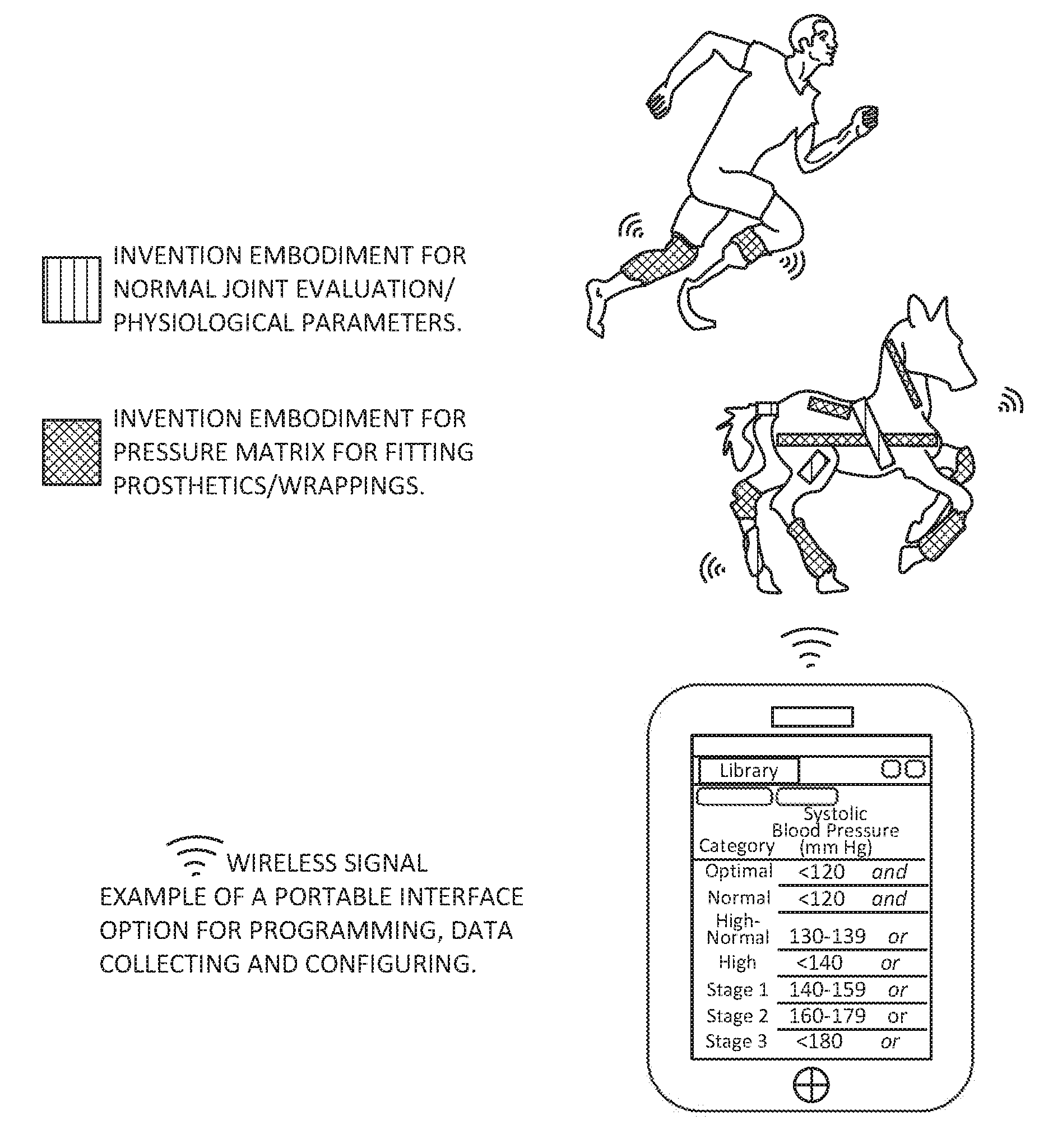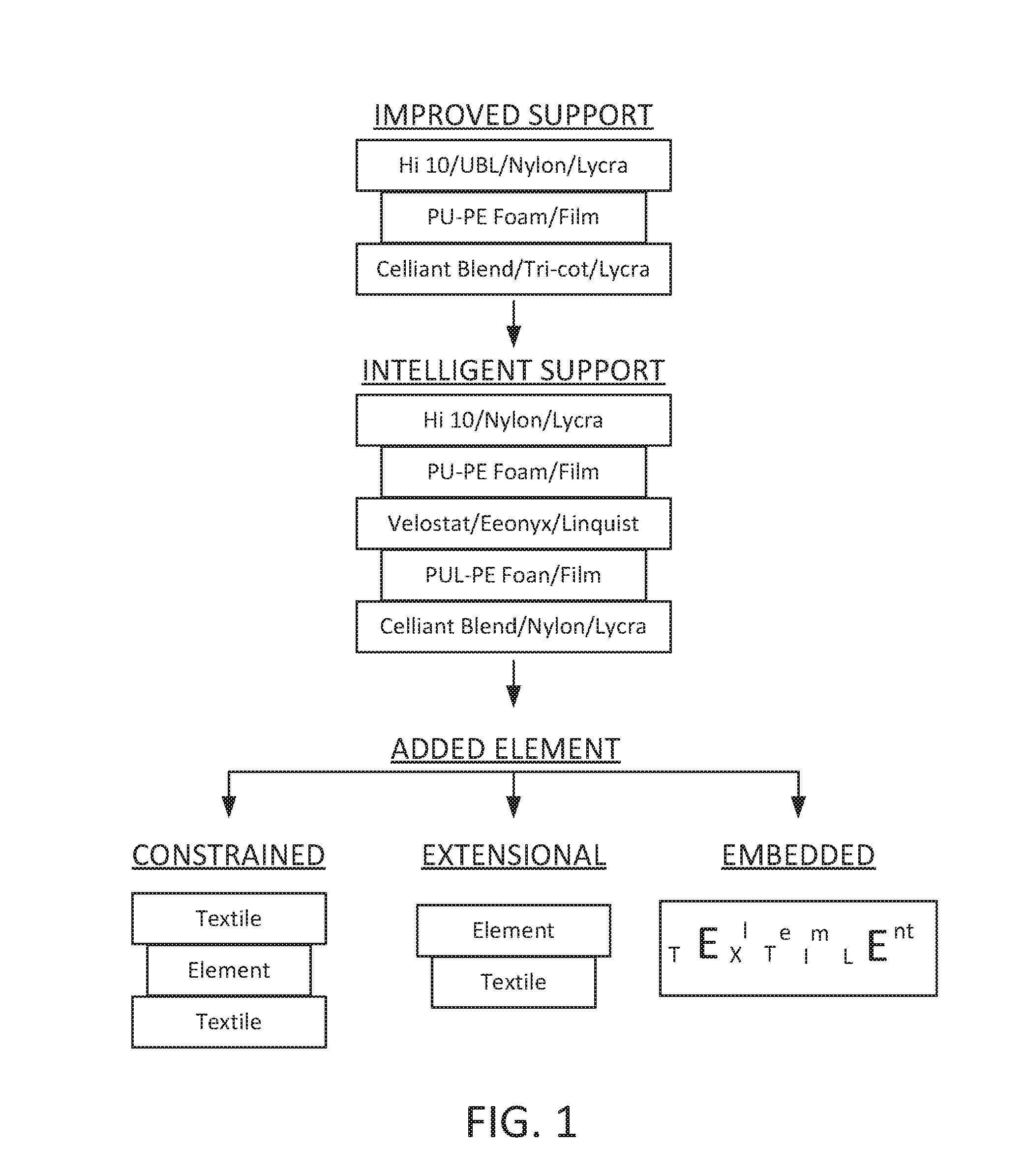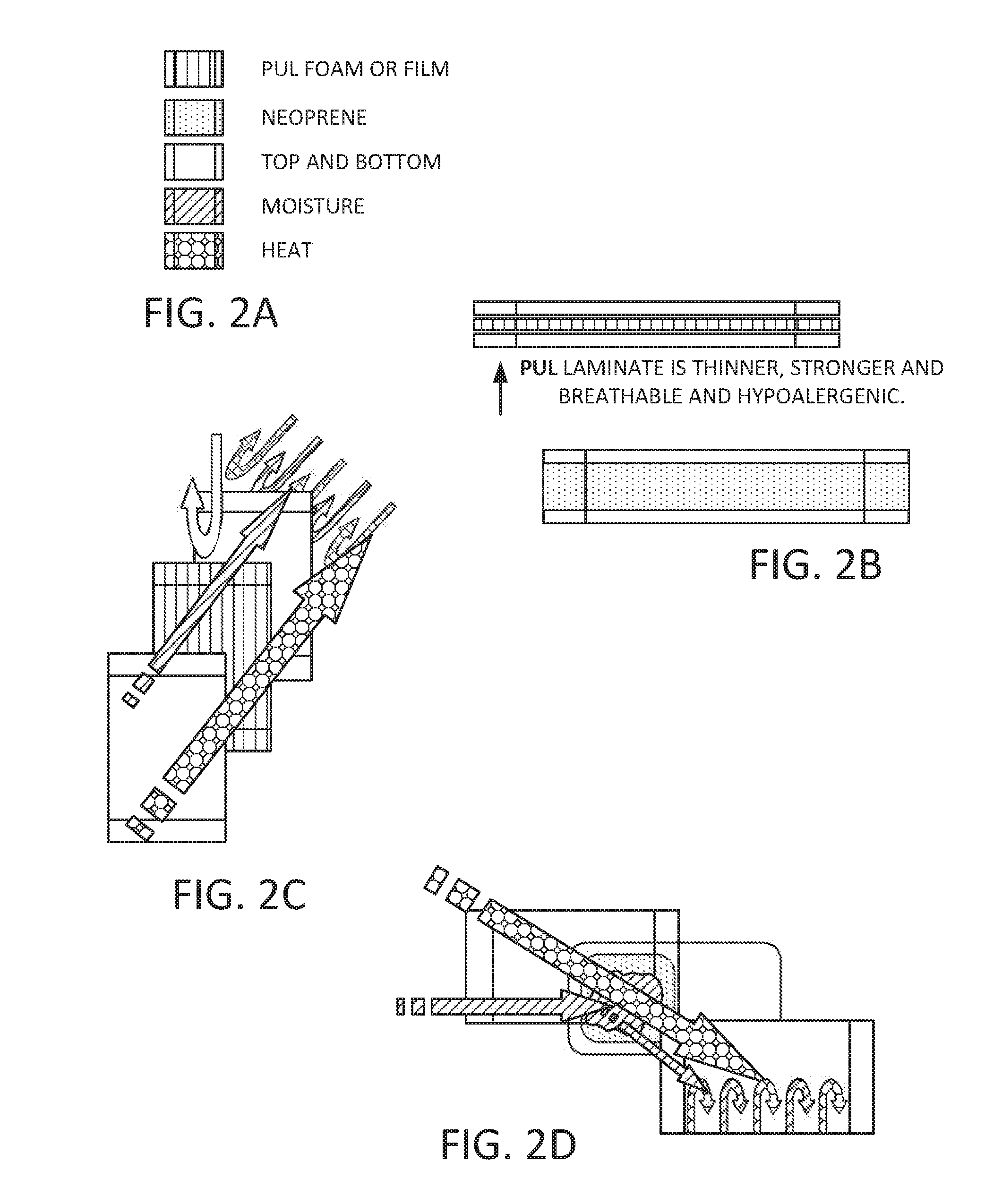Plurality of lamination for soft tissue compression support, protection and bracing; intelligent textile for equine and equestrian sports or activities
a technology of compression support and lamination, applied in the field of polymorphism of laminated textiles, can solve the problems of increased risk of soft tissue injury, lameness and death of equine, heat damage, allergic reactions, etc., and achieve the effect of reducing risk
- Summary
- Abstract
- Description
- Claims
- Application Information
AI Technical Summary
Benefits of technology
Problems solved by technology
Method used
Image
Examples
Embodiment Construction
[0074]FIG. 1 is a flow chart which illustrates the plurality of textile embodiments for equine apparel for constructing an improved soft tissue compression support including but not limited to bracing. (7B,C and 6C,D) The material is of at least three elastomeric or stretchable layers that are laminated and / or bonded together in a conventional manner. (2, 3B)The material is bonded in a manner to produce an elastomeric material of desired thickness that stretches in a minimum of one direction, but may be omni-directional. At least one layer is of polyurethane polyether material that stretches in a minimum of one direction, but may be omni-directional. See FIG. 3D of the drawings which illustrates a textile embodiment where an element is added to at least one layer of the laminate to obtain a specified parameter.
[0075]See FIG. 3E for embodiment examples for obtaining a specified value. See FIG. 3C for example embodiments to obtain a parameter and value data pair. These drawings are no...
PUM
| Property | Measurement | Unit |
|---|---|---|
| thickness | aaaaa | aaaaa |
| compression force | aaaaa | aaaaa |
| stretchable | aaaaa | aaaaa |
Abstract
Description
Claims
Application Information
 Login to View More
Login to View More - R&D
- Intellectual Property
- Life Sciences
- Materials
- Tech Scout
- Unparalleled Data Quality
- Higher Quality Content
- 60% Fewer Hallucinations
Browse by: Latest US Patents, China's latest patents, Technical Efficacy Thesaurus, Application Domain, Technology Topic, Popular Technical Reports.
© 2025 PatSnap. All rights reserved.Legal|Privacy policy|Modern Slavery Act Transparency Statement|Sitemap|About US| Contact US: help@patsnap.com



